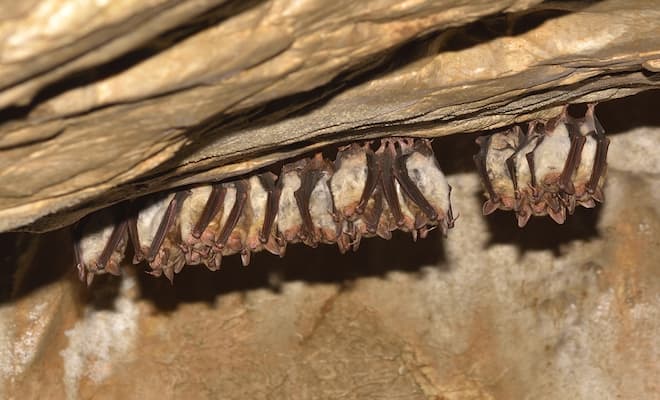Bats are found all over the world, but you won’t find a lot of bats in cold climates. The majority of bats that you will find thrive in damp or tropical climates. When these bats do live in these cold climates, they migrate towards warmer places. Bats mainly roost in dark, damp, and secluded places such as caves, caverns, and forest trees preferably away from human civilization. However, due to deforestation an increasing number of bats have fled these areas and sought refuge in human habits ironically in places where humans live. Bats such as the Litlle Brown Myotis, Small-footed Bat, Eastern Pipistrelle, and Big Brown Bat are under threat and are often found in Southern Ontario.
Have bats you need to get rid of? Speak to our technicians to find out how we remove bats and to set up an appointment at Bat Control!
Bats hunt in less-covered areas and open vast lands to make hunting easier. They like to do this on lakes and rocky surfaces where their ability really comes to fruition. When hunting, bats will also look for sheltering to meet their nocturnal needs. This is because bats are most active during nighttime, and this is where they are at their prime. They use their skills such as echolocation. Bats use their echolocation to paint an image of their surroundings using vibrations of the sound they make to guide them.
The most vulnerable bats are the bats that are in torpor and in their nursing colonies. Before they go into their state of torpor, bats will stock up fat reserves to help them through winter. This fat reserve is meant to last the entire duration of the winter. Humans are one factor that adds to their decline. Studies have shown that when humans disturb their torpor, it will lead to a lot of energy loss. This amount is equal to a few days of energy metabolized.
Therefore, bats have a protected status in Ontario because it is also indispensable to the very ecosystem we profit off of. Despite the reputation we have created for the bat, they have an important role in keeping certain insects at bay to prevent overpopulation.
The most common bat species to invade attics is the Small Brown Myotis. These bat species stay the best-studies bats according to research. These bat species roost with hundreds of bats together tightly packed together. Their torpor usually starts in September. Technicians hired to removed bats are bound to stringent rules and regulations as not to disturb them. Speak to your technician to discuss the legalities. Technicians and customers have a limited window of opportunity to remove them, so as soon as you hear them, it is good to call a technician from Bat Control.
Bat Control consists of licensed bat removal specialists that are trained, certified, and insured experts that know how to remove all kinds of bats using proven methods and techniques ethically and safely. For more information, contact, the customer service specialists from Bat Control.
